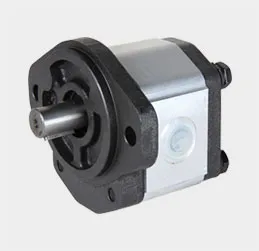Exploring the Similarities Between CF8M and CF3M in Industrial Applications
Understanding CF8M and CF3M Essential Materials in Valve Manufacturing
In the realm of industrial applications, particularly within valve manufacturing and piping systems, the choice of material significantly influences both functionality and durability. Among the many materials available, CF8M and CF3M are two stainless steel grades that stand out, particularly in environments requiring high resistance to corrosion, temperature variations, and mechanical stress.
What Are CF8M and CF3M?
CF8M and CF3M are both grades of austenitic stainless steel, categorized under the ASTM A351 standard. This standard governs the specifications for castings of various stainless steel materials used in valve and pump manufacturing. Each grade has its unique characteristics that make it suitable for different applications in various industries.
CF8M is a high nickel stainless steel alloy, known for its excellent resistance to corrosion. It contains approximately 18% chromium, 8% nickel, with maximal chemical stability and tensile strength. CF8M is particularly favored in applications where mild to moderate corrosive environments are expected, such as in chemical processing, oil and gas, and marine applications.
CF3M, on the other hand, is similar to CF8M but contains a lower carbon content and adds molybdenum for enhanced resistance to pitting and crevice corrosion. CF3M typically consists of about 16% chromium, 10% nickel, and 2% molybdenum. This material is often utilized in environments featuring more aggressive chemicals, especially in applications involving chlorides, like desalination plants and chemical processing industries.
.
1. Corrosion Resistance One of the standout features of both CF8M and CF3M is their exceptional ability to resist corrosion. CF8M is suitable for mildly corrosive environments, while CF3M’s enhanced composition allows it to withstand chlorides and other aggressive agents. This makes CF3M the preferred choice in coastal applications and industries dealing with seawater.
cf8m cf3m

2. Temperature Stability Both materials maintain structural integrity at elevated temperatures. CF8M can handle temperatures up to 1000°F (538°C), while CF3M, with its low carbon content, performs better under continuous high temperatures, making it resilient in heat exchanger systems and steam applications.
3. Mechanical Strength CF8M exhibits high tensile strength, making it highly reliable under mechanical loads. CF3M’s lower content of carbon contributes to its lack of brittleness and improved ductility, allowing it to endure cyclic stresses without failure.
4. Machinability and Weldability When it comes to manufacturing processes, both CF8M and CF3M boast good machinability and weldability. Fabricators often prefer these materials due to their easy shaping and joining properties, enabling creating precise components in valve manufacturing.
5. Applications in Industries CF8M is widely used across various sectors, including oil and gas, pharmaceuticals, and food processing, where hygiene is a top priority. Conversely, CF3M finds its footing in more aggressive sectors such as chemical processing and waste management, where durability against harsh chemicals is crucial.
Choosing Between CF8M and CF3M
Selecting between CF8M and CF3M ultimately depends on the specific operational environment and the materials' properties. Users should consider factors like the type of chemicals involved, temperature ranges, and exposure to corrosive elements before making a decision.
In summary, both CF8M and CF3M present solid options for valve manufacturing, each with strengths tailored to different operational needs. As industries continue to evolve and face new challenges, understanding these materials' attributes and applications ensures that engineers and manufacturers can make informed choices that enhance safety and performance in their projects.
For those investing in valve systems and piping solutions, the emphasis should always be on the quality of materials used. CF8M and CF3M stand out as robust choices that meet the stringent requirements of modern industrial applications, thereby enhancing the longevity and reliability of the systems they comprise.
-
OEM Sand Cast Pump Valve Fittings - Baoding Hairun Machinery And Equipment Trading Co., Ltd.NewsJul.31,2025
-
OEM Sand Cast Pump Valve Fittings - Baoding Hairun | Precision Engineering, CustomizableNewsJul.30,2025
-
OEM Sand Cast Pump Valve Fittings - Baoding Hairun Machinery And Equipment Trading Co., Ltd.NewsJul.30,2025
-
OEM Sand Cast Pump Valve Fittings - Baoding Hairun Machinery And Equipment Trading Co., Ltd.NewsJul.30,2025
-
OEM Sand Cast Pump Valve Fittings - Baoding Hairun Machinery|Precision Engineering&Fluid ControlNewsJul.30,2025
-
OEM Sand Cast Pump Valve Fittings - Baoding Hairun Machinery And Equipment Trading Co., Ltd.NewsJul.30,2025















